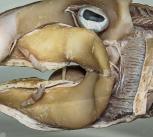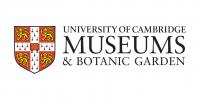Invasive sampling of specimens

Tissue sampling for molecular studies, fossil preparation, dissection of specimens for anatomical research, sectioning of teeth, bones, or skin, coating of specimens or parts thereof for SEM use, or otherwise altering the form and/or content of a specimen are examples of invasive sampling.
Requests for invasive sampling of our collections should be made by email to the relevant Curator. Each such request must include the following information. Please set out your request using each of the seven headings below, ensuring each point is addressed:
- the purpose of the research and its scientific merit;
- the sampling protocol to be employed (including the exact amount and identity of the material to be processed);
- why the chosen protocol is the least destructive method possible;
- evidence of the researcher’s competence with the protocol;
- why museum material is preferred over other sources;
- why it is necessary to use UMZC specimens (as opposed to material from other institutions);
- what laboratory protocols are taken when working with degraded/ancient DNA.
This should include evidence that the researcher has been in contact with other institutions to obtain specimens. Invasive sampling of UMZC material will normally be undertaken by established (post-doctoral) workers but may be undertaken by advanced students. In the latter case the request must be made by the student’s academic advisor, who will be ultimately responsible for the loaned material.
In order to be successful, requests for invasive sampling should meet the following criteria:
- the taxon concerned is amply represented in the UMZC collection;
- the research is of sufficient scientific merit to justify any destruction of the original material;
- the desired material is not available elsewhere;
- the researcher has sufficient experience and funding to successfully complete the proposed work.
Furthermore, if the original specimen is altered by the protocol, the researcher must return to the UMZC the specimen in its new form, well-documented and prepared for permanent accession. For example, approved alcohol-preserved specimens may be returned as histological sections, with complete documentation of the size (i.e. CRL, HL, body mass) of the original, as well as details on decalcification technique, mounting medium, staining, and section thickness of the new histological slides.
For preparation of fossil specimens, the name of the preparator and evidence of her/his prior experience will be required. A statement of the precise purpose of the preparation, areas to be prepared, and techniques to be used must be agreed in advance.
For DNA studies, the researcher is required to make all sequences amplified from UMZC material publicly available (via EMBL, GenBank, or equivalent web-accessible sources) by the date of publication or within 3 years of the start of the loan, whichever is earliest. We also ask that, beyond this date, extractions and/or aliquots from UMZC specimens be made unconditionally available to other researchers that request samples of the same taxa. In all cases, any remaining tissue should be returned to the UMZC, appropriately labelled and with references to resulting publications.
Projects that sample noninvasively (e.g. Rohland, Siedel, Hofreiter, 2004. Biotechniques 36(5): 814-820) will be favoured. If the proposal is approved, the Department will send a letter of agreement to the investigator, setting out the scope of the material to be sampled, methods of evaluation, standards for processing and documentation, timeframe for publication, and any other appropriate terms and conditions. Sampling is permitted after the researcher has countersigned the letter and returned it to the UMZC.
Any copies of publications resulting from study of UMZC specimens should be sent to the UMZC, care of the Collections Manager.





